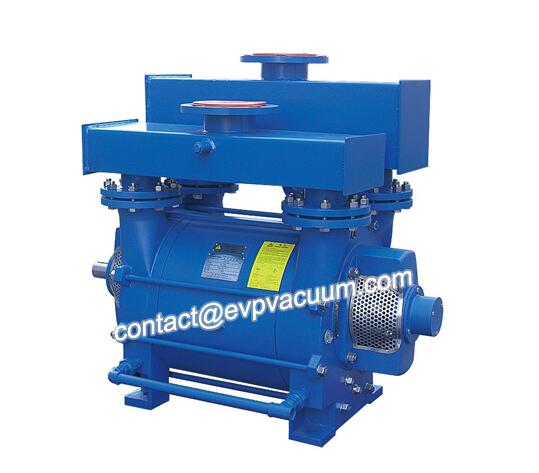Vacuum pump for bottle blow moulding
What is the feeding system of bottle blowing machine?
With the development of bottle blowing machine to the direction of high speed, high efficiency, mechanization and automation, its feeding mode has gradually changed from manual to automatic. Here are some common forms.
Spring automatic feeding bottle blowing machine, spring automatic feeding bottle blowing machine is usually composed of motor, spring chuck, inlet and outlet, spring and plastic hard pipe, etc. When working, the motor drives the spring to rotate at high speed to produce axial force and centrifugal force. Under the action of these forces, the material rises along the plastic hard pipe. When the material reaches the inlet and outlet, it is thrown into the hopper because of the centrifugal force. Its conveying capacity depends on the rotational speed of the spring, the outer diameter of the spring, the pitch of the spring and the gap between the outer diameter of the spring and the inner wall of the plastic hard pipe. The diameter of spring steel wire should not be less than 6 mm, otherwise it is easy to break. The bottle blowing machine is mainly used for conveying powder material, commonly known as powder feeder, and is generally used for feeding single equipment in the workshop.
(2) Bottle blowing machine with blast feeding. Bottle blowing machine with blast feeding mainly uses wind force to blow material into conveying pipeline and then into hopper through cyclone separator. The conveying capacity of the feeding system is related to the length of the pipeline. The bottle blowing machine is mainly used to transport granular materials, usually used in the centralized feeding system of large factories.
(3) Vacuum feeding bottle-blowing machine, when the vacuum feeding bottle-blowing machine works, the vacuum pump makes the small hopper form vacuum. The material first enters into the small hopper through the feeding tube. When the material in the small hopper is stored in a certain amount, the vacuum pump stops working. When the vacuum in the small hopper disappears and the feeding stops, the sealing cone opens and the material falls into the big hopper. When the material falls, the sealing cone is lifted upward due to the action of the heavy hammer, and the small hopper is closed again. At the same time, the micro-switch is touched, so that the vacuum pump starts to work again, so the reciprocating cycle. The bottle blowing machine is mainly used for conveying granular materials, and is usually used for feeding single equipment in the workshop. Filling action can ensure uniform feeding. The feeding screw is driven by the screw through the transmission chain. The screw rotation can strengthen the material transportation in the feeding section of the screw, and there is an overload protection bottle blowing machine. When the feeding inlet is blocked, the pressure exceeds the spring force, the screw will rise, or there are longitudinal grooves on the feeding screw. When the pressure exceeds, the material will flow back through these longitudinal grooves to prevent the hopper from being damaged. The bottle blowing machine is mainly used for conveying powder materials, and is usually used for feeding single equipment in the workshop.
In addition to the spiral forced feeding, there is also electromagnetic vibration hopper feeding. The electromagnetic vibration bottle blowing machine is installed on the hopper to eliminate the phenomenon of “pipe hole” and “bridge building” through intermittent vibration.
Blow molding
Extrusion blow moulding methods include extrusion of melted plastic polymers (usually HDPE or LDPE) into hollow tubes or “parisons”. In the process of extrusion shuttle blow moulding, two moulds shuttle back and forth to capture continuously extruded billets.
During the extrusion blow moulding process or EBM, the die moves back and forth to capture the continuous flow of plastic pipes, known as “parison”.
Once the die captures the billet, it is cut so that the die can shuttle or move to the side of the next station, where blow molding is introduced into the cavity containing the billet.
The blowing needle injects pressurized air into the billet, forcing the plastic, which is still ductile, to expand into the shape of the die.
Then trim the excess plastic or “flash” left at the top and bottom of the final container. The superfluous part at the top is called moil, and the superfluous part at the bottom is called tail.
The final bottle or jar is then transported to the final quality check, where pressurized air is blown into the sealed container to check for leakage.
Learn more about other blow moulding processes today, including injection blow moulding and injection stretch blow moulding.
Vacuum pumps for bottle blowing machines
(The article comes from the Internet. If reprinting is not allowed, please contact our company to delete it.)

